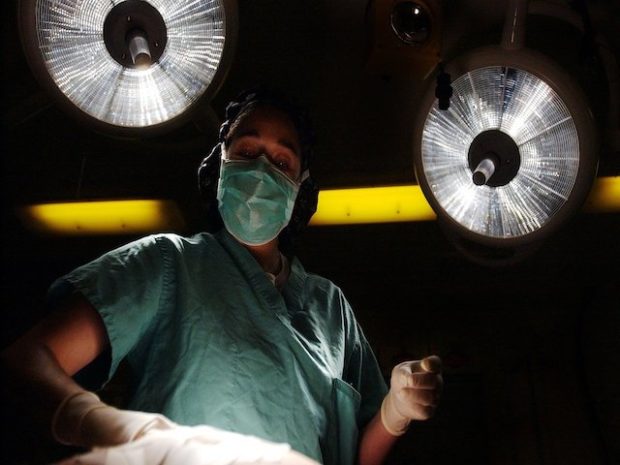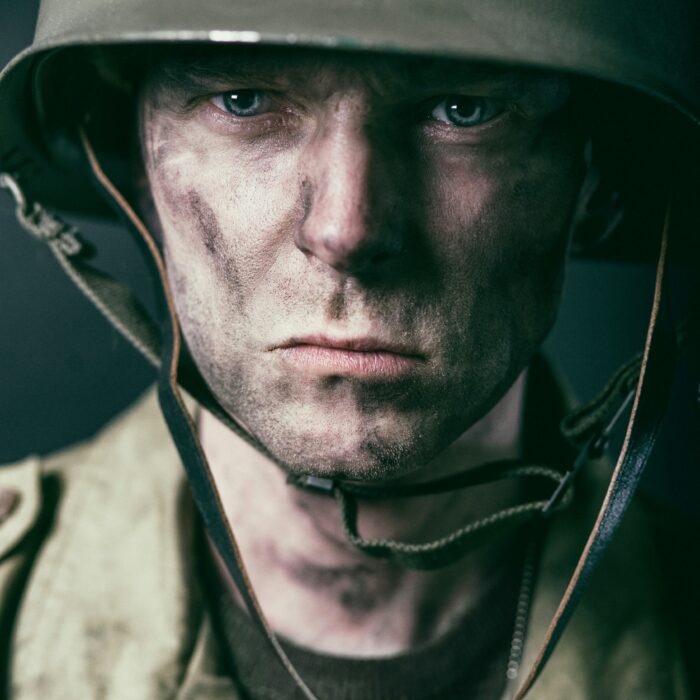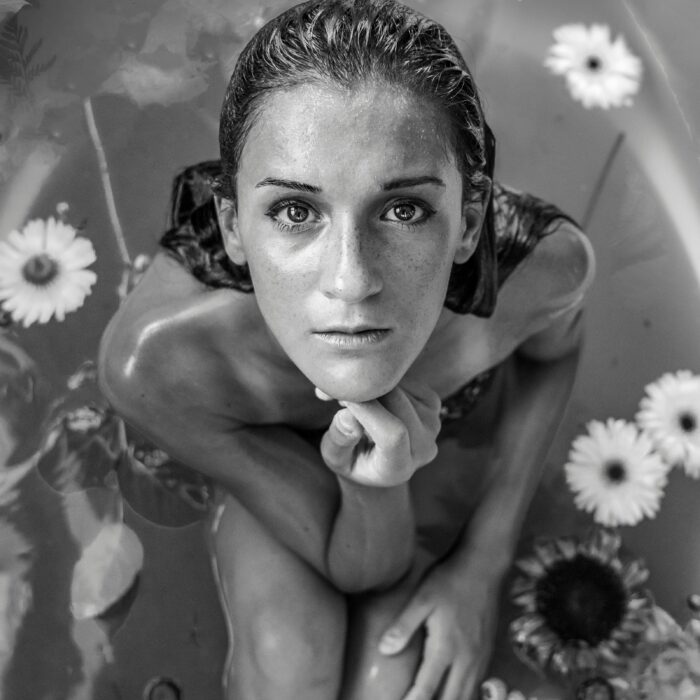You have no items in your cart. Want to get some nice things?
Go shopping
The hospital staff carefully monitor my patient’s vital signs. He must remain alive during the excision to prevent contamination and deterioration. Unfortunately, he has a rare reaction to drugs used to manage pain and cannot be put under. Anesthesia does not work with him. It makes him more alert and hyper-sensitive. It makes his heart race, instead of slowing it down. Drugs that typically work as depressives and sedatives provide no relief from pain or consciousness. Other than that, aside from being heavily tattooed, my patient, Dr. Gaasch, is a healthy male in his mid-forties.
I deeply regret his immunity to anesthesia. He has to be “locked-in” and will be conscious, feeling everything. I’ve given him nothing but a paralytic, intubated and ventilated him.
This makes the surgical procedure I’m about to perform akin to torture. Even knowing this, we both agreed the procedure must be done. The hospital required mandatory meetings with a psychologist. After separate counseling sessions, my patient and I had to sign legal waivers, in the presence of lawyers, but we were always kept apart, not allowed to meet or speak to each other before the surgery.
The nurses know what I’m going through. That’s why none of the staff who are assisting me will look into my eyes. I don’t blame them. I could barely stand to look into my own eyes in the mirror this morning, and yet I’ve done what is needed.
I’ve already drawn lines around the white monkey of his heart, the polar bears of his torso. I’ve traced the geometry of the lemurs on his left shoulder, the cobras behind his earlobes. The harpy owl of his belly near the golden eagle and gray wolves of his pelvis. The rhinos, pelicans, and jaguar storming a pride of lions lazing over his inner thighs. The snow leopards crouching near grizzly bears stalking great apes swinging on his arms.
His breathing is steady. He’s doing well, though his eyes keep fluttering, following me. His hands flex, involuntarily, stroking the pandas of his hips. None of this is supposed to happen under normal circumstances. But these are anything but normal.
In one intricate tattoo, the lioness lunges at the throat of a caribou on the side of my patient’s hip. Near an enlarged head of an African lion, its tongue is covered in minuscule sharp hooks. In each hook, a tiny endangered songbird flies.
I never wanted to be in this miserable position, where no choice is without extreme suffering. If the press got word of what I’m taking from his tattoos, the public wouldn’t understand how many animals have to suffer and die. Most people think every living thing is replaceable due to cloning, but they don’t understand the underclass of female animals used to create clones. More importantly, they don’t know about the bioterrorists who have destroyed bio-banks of animal DNA to prevent new additions to the underclass of female animals.
Though my patient and I are working against the bioterrorists, undoing all they have done, the suffering of surrogate animal mothers fills me with disgust. Whenever the DNA of an endangered species is fused with eggs from a closely related species, hybrid embryos often fail to develop properly. Most cloned foetuses die in the womb, jeopardizing the health of surrogate mothers. Often the pregnant animal swells to bursting. Even when mothers from the same species can be found, hundreds of females are sacrificed. Treated with hormones and forced to mate with vasectomized males, surrogates are implanted with cloned embryos, so big they cause agonizing births requiring Caesarean sections. Once an animal becomes a surrogate, she is bred to death. Most of her offspring die inside her or beside her, shortly after they are born. Of those that survive, most die early from organ failure.
Nevertheless, I slice just above my patient’s femur, and blood gushes over his patella. In this tattoo I’m excising, a shrike lands on a cheetah’s back under Dr. Gaasch’s right knee. Up his leg, a baby raccoon swings from its mother’s mouth, carried by the nape. Walking upright along my patient’s pubis, a soaked mother beaver carries her baby in her arms. A brood of opossum babies peek out of their mother’s pouch near his groin.
After three hours of surgery, I am required to take a break. The operating room needs to be refreshed. On my way to change my scrubs, I see the television in the nurses’ station. On television, the last zoo animals, no longer able to breed, are paraded in front of cameras before calls for a massive culling. The government has already decided to start over again with new animals created from the bio-bank.
The last captive animals fade into a shadow of their wild ancestors. Most people stopped visiting zoos years before zoos were outlawed. The zoos slowly shut down, and many of the last animals in captivity were taken on safari to be hunted by rich men seeking trophies. Mostly males have been shot, since they make better trophies. The females, those who have escaped the culling, will be forced into surrogacy.
When I return to the operating room, the nurses have turned my patient onto his side. The Nile crocodile of the enormous tattoo edges my patient’s neck, where it holds its prey, twisting off a deer’s limbs by spinning. The gill slits of the great white shark are full of falcons behind his right thigh near the golden eagle’s huge talons.
I imagine animals fading in closed exhibits.
The smaller, more inbred a zoo population, the more susceptible it is to a single harmful genetic mutation. Perhaps clones will increase the genetic diversity of the endangered zoo population. That’s why Dr. Gaasch became a poacher, so researchers could access DNA from many different individual species being hunted to extinction.
He infiltrated their inner circle. He scavenged and froze blood, sperm, and umbilical-cord cells from the animals and saved the DNA in a safe place.
With every animal he killed, he added another tattoo to his body. Each tattoo housed DNA stored in microscopic capsules of a heat-controlled medical-grade Plexiglas. Sterilized and set in microscopic acrylic beads of a synthetic resin, the DNA was enclosed, protected, and permanent. It would not degrade and could be surgically removed. Mixed into the ink, these beads were safe for injection because the non-biodegradable polymer never absorbed into his skin. The process was safe, or should have been, in theory, since the animal DNA wasn’t actually injected into the skin but into the ink of his tattoos. Instead of disappearing into his body, the DNA was captured in ink. In hundreds of tattoos, thousands of animals’ DNA wove tightly. Now, most of his skin has to be removed in order to harvest it.
I slice into his right calf, where young minks trail their mother as she hunts. Baby porcupines swing over branches as an African potto clings to a tree below three baby kangaroos resting on a spoon. Inside the rough scales of a beaver’s tail, a stampede of wild horses emerges from dust. My scalpel gleams, glinting too brightly as I think of all my patient and I have in common. We might have been friends, under different circumstances. I might have dated him, if I didn’t have to skin him alive.
The hyena on his left shoulder blade stares at me with savage amber eyes. The sloth under his arm has a mischievous expression, as does the giraffe on the side of his left calf. Around his genitals, a giant squid and anaconda entangle with an octopus beside a great white shark, marlin, and sealions. All over his body, the cells of endangered animals thrive, hidden in plain sight, his tattoos mapping where to cut.
The nurses turn him over onto his belly before exposing his back and legs. The red fox and the bat-eared fox leap over his buttocks near the carrion crows of his lower spine. A barn owl captures a rattle snake on the back of his right femur. A horseshoe bat slides, the thin fabric of its wings spread across Dr. Gaasch’s back. Staring into the meshwork of wings, I see a camouflaged grid of sea anemones, starfish, seahorses, woodpeckers, and electric eels. Ready to begin excising more of the skin of his back, I cut and peel around his spine.
Now, I slice through the flesh of his ankle, carving, and he starts whimpering, talking, whispering. The nurses pause, faces frozen in horror.
“Is that him? He isn’t supposed to be talking. What should we do?” the nurses ask.
“Don’t waste time,” I say, realizing they think me callous, but every second we pause to express concern is a second longer he has to suffer.
No one is waiting for him in the waiting room. He is single, childless, and has already said goodbye to friends and family, who apparently think he is enjoying another long vacation, traveling the world.
On his travels, my patient often befriended wealthy men who hunted lions and other magnificent creatures for sport. Whenever one animal was taken down, he collected samples of its DNA, partly because he theorized the DNA of animals captive for generations had deteriorated and needed to be refreshed by samples from the wild.
He shot lions.
He shot zebras.
He shot great apes.
He shot leopards.
He used a bow and arrow to take down eagles from the sky before returning to drink cognac in his glass-walled penthouse overlooking the biomedical facility he worked for, taking his hunting vacations on their dime. Trusting no one, even his colleagues, he secretly began backing up the samples with his own private collection of animal DNA, stored where no one would think to look, in plain sight, within his tattoos, where the walrus pup hitches a ride on its mother’s back. A sealion and a seal cruise blue water enveloping his thighs. The ivory tusk of a walrus gleams as it digs out shellfish on the bottom of the sea.
I remember the articles I read about Dr. Gaasch in hunting magazines.
He slaughtered American buffalo.
He bled a blue whale and a school of dolphin.
An eccentric hunter, near his taxidermies, he posed nude to show his heavily tattooed body, only his hands, feet, and face untouched.
On his inner left shin, an aardvark with large ears and elongated snout appears almost tubular, its long tongue flicking out to Dr. Gaasch’s shinbone. Meanwhile, the duckbilled platypus dives, flexing its poisonous spur, as if underwater, its tiny eyes covered in fur, claws burrowing into the banks of rivers. Documenting his tattoos as body art, he made sure no one knew his plan, until it was necessary. I’m one of the few who will ever know because he’s helpless on my table, waiting to die. He specifically asked for me to do this.
The nurses refresh my tray of instruments, again. New scalpels, scissors, saws, and tweezers gleam. As my patient’s blood flows, my assistants suction near towels to stop the flood. Retractor, needle holder, forceps, towel clamps, vascular clamps—nothing is as helpful as my scalpel’s fine edge, sharp enough to allow maximum control.
Typically, I save lives through skin transplants. Typically, when I take someone apart, I put him back together. I’ve worked with skin grafting on burn patients, accident victims, and victims of violence, trauma, infection, and skin cancer.
My movements are fluid and smooth. I could skin a man faster than any hunter could skin an animal, except for the fact that I must excise such complicated shapes, guided by the outline of my patient’s tattoos. I have turned his skin into a jigsaw puzzle. After excision, each puzzle piece is taken away on a tray, expertly packaged by medical technicians working for the bio-bank. Even with all the pieces to cut and tweeze, I work fast. I make no mistakes. Over the years, I have practiced on drumsticks, oranges, grapes, and chicken feet. I’ve mastered flap design and classification, the geometry of flaps, all the ways of planning surgical excisions.
Until now, I’ve done everything for my patients to prevent suffering, to avoid scars and tissue damage, to allow healing. Even if it meant animals sometimes had to die in various studies or in my surgical training.
So many animals have died to save human lives. The first serious attempts at xenotransplantation began in the early 1900s, when slices of rabbit kidney were transplanted into a child with renal failure. Since then, countless apes and pigs have died to provide organ transplants. Millions of mice have grown human tumors on their bodies. It’s about time, as Dr. Gaasch said in the video of his final will and testament (evidence recorded to keep me out of prison, or at least reduce my sentence), for humans to start dying to save the lives of animals.
A true innovator, Dr. Gaasch experimented on his own body. Whether he knew what would need to happen in the beginning is anyone’s guess. It was a process that took years.
On his right hip, a brown bear stomps the salmons’ spawning grounds. A massive clawed forepaw sweeps Dr. Gaasch’s right underarm to pin a salmon to the shallows. Meanwhile, a little spider monkey swings through the tree branches of my patient’s rib cage, long legs and curved tail entwined with the leaves where doves hide. A troop of baboons with long bloody canines hunt, guided by two old males, in formation over Dr. Gaasch’s belly, toward his right hand, twitching.
Like Dr. Gaasch, I want the zoo animals to live, again. That’s how I got involved and why I am prepared to be tried for murder. As a surgeon, I’ve never lost a patient before, and now I’m losing one on purpose. To make matters more complicated, my patient is a doctor, internationally celebrated for his body art, big game hunting, and research in genetics.
“My body, my life,” he said in the videotaped will, “is a gift to the last zoo animals. I could feed myself to dying lions, or I could grow new ones.”
The sea otter, swimming on its back, clutches a fish on its reddish-brown belly. The humpback whale’s skin nodules are alive with barnacles full of many species of whale as I excise the pink flamingo in the cheetah’s mouth.
I’ve watched Dr. Gaasch’s video many times, enough to be a believer in the last zoo—the new last zoo. I have to be, since every excision will be full thickness, taking the epidermis and the entire thickness of the dermis. Here, in the snow den in the hollow of my patient’s back, a mother polar bear suckles her cubs.
In spite of what I know, I keep wondering if an intentionally fatal procedure makes a doctor a murderer. What if the patient isn’t a victim but a willing donor?
A chinchilla eats nuts near a wallaby where the fruit bat crawls over Dr. Gaasch’s hipbones. Here, a frightened hedgehog unrolls as a badger creeps over grass, unaware of the fortress hidden below, the burrow where the mother mole has birthed four pink babies in a cushioned nest lined with grass the color of the bush baby’s enormous eyes.
I was warned not to speak to Dr. Gaasch, mostly to protect myself. According to what the hospital administrators told me, he insisted on the procedure happening on the soonest date possible, due to cellular rejection he feared had already begun. “I’m losing them,” he had said in the video. “I can’t hold them much longer.” He was particularly concerned with the giraffes of his elbows, or so I’ve been told. The monkeys are close to his heart, yet he worried they were leaving.
I excise the scorpion that clutches a grasshopper in its pinchers near the Egyptian vulture, bald at the front of its face, cracking the bones of carrion by dropping them onto rocks. The chimpanzees, after killing and eating a baby baboon, are cleaning themselves with leaves, as I cut the black ink of their fur in sharp contrast to the red of blood.
Chronic rejection is slow and progressive, but bioterrorists and animal rights activists never counted on a researcher like Dr. Gaasch. A very generous man, he’s a prime example of informed consent, having known all the risks before he began his experiments. Though animal-to-human infection is rare, xenozoonosis is my fear. I’ve been warned about the dangers of cross-contamination with endogenous retroviruses, remnants of ancient viral infections, found in the genomes of mammals. They usually are not infectious in the host, but the virus may infect another species.
A weasel emerges from a tree hole, Dr. Gaasch’s navel. A prairie dog digs furiously in the dirt, where a mongoose cracks a cobra’s skull.
I can’t help but stare at what’s left of him—still so many tattoos to cut away. On the exam table, Dr. Gaasch is a seek-and-find of animals in cages. All the animals tattooed on his body I read about in childhood—big cats, great apes, bears, crocodiles, and raptors. I always wanted to go to a zoo, but zoos were already on their way to being outlawed, condemned, before I was a teenager. When I was a kid, my parents strongly objected, on moral grounds, calling the zoo an animal jail.
Dr. Gaasch’s eyes remain open as my assistants turn him, again. He sees. I know he sees. Through hundreds of incisions and excisions, he sees and feels and knows what’s happening. He just isn’t be able to move voluntarily. No matter what happens, I’ve been told not to look into his eyes, unless absolutely necessary.
I try to heed this warning, knowing I must keep my cool.
Even though I was chosen for my training and experience in xenotransplantation, my high success rate, and steady hands, this is no xenograft. Even so, because of the unusual nature of this procedure, I complained only a little when required to speak to a board-certified psychologist approved by the surgical facility. Now, I take a deep breath and remember what the psychologist told me: I have to keep trying to understand Dr. Gaasch’s sacrifice. I have to find a way to appreciate it and make sense of it, or else I will be at risk due to the trauma of my work.
I know what happens to the skin I’m removing. A lab has to remove the microscopic envelopes, the DNA captured in the ink of his animal tattoos, but there is so much captured DNA of so many species that the excised skin has to be separated and shipped to different labs. The procedure has never been attempted before on this scale and requires over eight hours of precise incisions. With over two more hours remaining, I don’t know if I can make it. In all my years of medical training, nothing has prepared me for such extensive excising.
I slice into him. Again, and again.
He bleeds and twitches and whispers words I can’t understand.
I try not to listen to what he’s whispering.
I try not to look into his eyes.
I cut and keep cutting.
I peel his skin away, piece by piece, denuding his body, exposing veins, arteries, bones, and organs. The nurses have to keep holding his exposed organs with their gloved hands to keep the organs from falling out of his body.
Wiping more blood away, the nurses make sure the remaining tattoos are visible as I cut.
I slice the armadillo’s suit of bony armor camouflaged in the shadow of two bighorn rams smashing horns over an ewe. Beneath Dr. Gaasch’s thorax, hippos clash, lip to lip, in wide open-mouth courtship. I take strips of remaining skin off my patient’s abdomen and groin. Then I peel a patch of the skin above the clavicle. Moving on, I excise even more skin from his legs, hips, back, and chest. With each cut, I’m targeting the next priority, according to the detailed instructions provided by the hospital. As agreed, I excise my patient’s tattoos in a prescribed order.
I try to think of the lives we are saving, not the life I am taking. This exquisite man, a genius and gorgeous. Despite my admiration for him, I mutilate him slowly, skinning him alive. I move onto the next tattoo on the excision list. Turned onto its back, a hedgehog rolls in a defensive ball near a porcupine, quills erect. A toe-toed sloth sleeps in clouds of mist. As I begin to slice away at his right inner wrist, Dr. Gaasch twitches, almost imperceptibly. I wonder if it’s my imagination. Our eyes meet. In those eyes, I see forgiveness. At least, I hope I do.
I was twelve years old when the last giraffe fell in Europe, culled in public for educational purposes. I was sixteen when the last wild zebra walked the earth. The last wild elephant gone before I could speak, these mystical creatures haunted my dreams. Apparently, Dr. Gaasch loved zoo animals as much as I did—or as much as I thought I did before the culling. Now there are no more open zoos or tigers or lions or bears on display, only a few hidden in closed facilities before being released to be hunted on safari or held as future surrogates. Many of the last zoo animals were culled after the zoo closings, death considered more humane than captivity.
On Dr. Gaasch’s left leg, I excise a jaguar. On his right bicep, a snow leopard. Over the remaining skin of his chest, a harpy eagle, and inside the feathers of the giant eagle are other eagles, raptors so tiny they nestle inside the feathers. An elephant on his neck is filled with hidden crocodiles, visible only under a magnifying glass. The peacock on his thigh houses lizards. A hippo bathes above his right elbow near the cobra and the silver back chasing flamingo.
I only want the animals to live, again, so I can see them with my own eyes.
The brown pelican dives through the air to catch its prey on the edge of Dr. Gaasch’s left ankle near a piranha with razor-sharp triangular teeth. Inside each scale of the piranha are tiny zebras, Indian tigers, hatchet fish, carpet sharks, geckos, leopards, praying mantis, and snowy owls hunting prey so small they can only be seen under the lens of a microscope.
Dr. Gaasch is Noah’s Ark because he put a bit of every animal into his tattoos, to save the animals from leaving the earth. Now I want to save him, so I steal a vial of his blood—to keep as my own. The nurses pause but say nothing. I want to have his DNA tattooed on me and to find a way to bring him back, but then I remember it won’t be him. We can only clone the body, never the soul.
His body now resembles wet red lace, so many pieces of skin cut away that only thin shreds remain to link patches.
For now, I do what the psychologist asked. I remind myself why I am taking my patient’s life.
In my childhood, people started to feel the vast emptiness of a world without wild animals. I was the first generation to experience how the missing animals became the obsession of children. Lions, giraffes, alligators, zebras, and bears were the new dinosaurs. There were so many movies about bringing them back to life, so the zoos could open, again.
I never saw a zoo, outside of photographs and television and descriptions in history books. By the time I was born, many of the species once contained in zoos were allowed to become extinct. They no longer existed in the wild, their habitat gone. No more gorillas, lions, tigers, bears. No more giraffes, hippos, or elephants. No more harpy eagles or pandas.
Perhaps my patient’s intricate ink hides a new type of cage, trapping animals in a high-tech way. A flying squirrel glides into the den of Dr. Gaasch’s left underarm hollow. The nocturnal solenodon sticks its head into a hole near a bison beside Dr. Gaasch’s armpit.
Still skinning him alive, even though I know he’s going to change the world, I forgive a sudden selfish thought: how I might have loved him! I could have read his tattoos like a novel in bed every night before turning out the lights. As the sun washed over his naked body in the morning, he could have whispered to me without speaking. His ink tells stories, even now, as I strip and pull a narrow flap of skin with clamps and tweezers. His skin is a seek-and-find, and I’ve always been good at finding hidden objects.
Slowly, I finish, excising the last strips, the narrow flaps of his chest. It’s like peeling an orange with a knife. Only the skin of his feet, his hands, and his face remains. The nurses remove the ventilator, yet somehow, Dr. Gaasch still breathes. His heart still beats. He inhales and exhales, slowly but steady. He should be gone now. I know. We all know. He should be leaving. He could have left us minutes, or even hours, ago. The nurses look at me, as if wondering what to do. This wasn’t supposed to happen. I see it in their eyes, but I don’t tell them what we already know because I’m afraid he might hear me. It’s too terrible to put into words. We are finished with him, but he’s not gone. He should be leaving, but his heart is still beating. I want him to have good thoughts and to know all is well, but I can’t bring myself to speak. His eyes finally close. My assistants sigh. Knowing these are my patient’s last moments, I want him to sense I’m still here for him. Because I need him to know he’s not alone, I remove my gloves and reach for his hand during these, his last breaths.
I squeeze his hand. He opens his eyes.

Aimee Parkison
Aimee Parkison is the author of five books of fiction. Refrigerated Music for a Gleaming Woman won the FC2 Catherine Doctorow Innovative Fiction Prize and was named one of Brooklyn Rails’ Best Books of 2017. Parkison's fiction has appeared in numerous literary journals, in translation in Italian, and in the Best Small Fictions anthology series. Her fiction has won a Christopher Isherwood Fellowship, the Kurt Vonnegut Prize from North American Review, the Starcherone Prize for Innovative Fiction, the Jack Dyer Prize from Crab Orchard Review, a North Carolina Arts Council Fellowship, a Writers at Work Fellowship, a Puffin Foundation Fellowship, an American Antiquarian Society William Randolph Hearst Creative Artists Fellowship, and a William Faulkner Literary Competition Prize for the Novel. Parkison teaches in the MFA and PhD Creative Writing Program at Oklahoma State University. More information available at www.aimeeparkison.com
- Web |
- More Posts(1)




